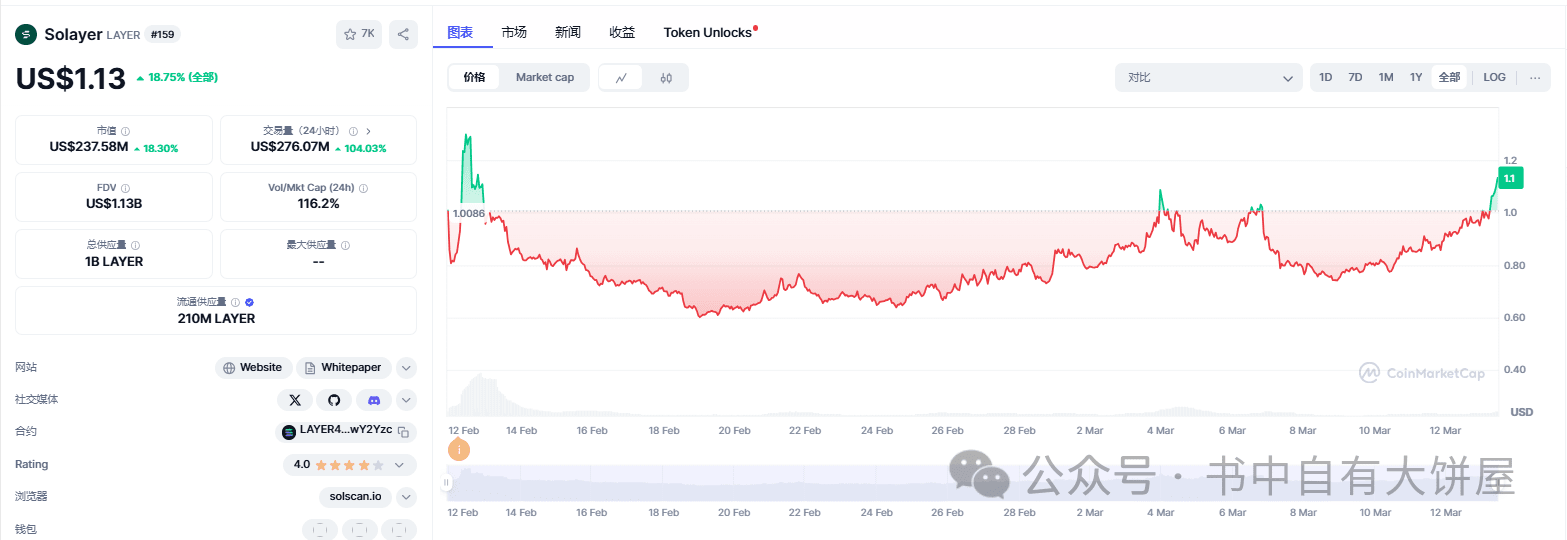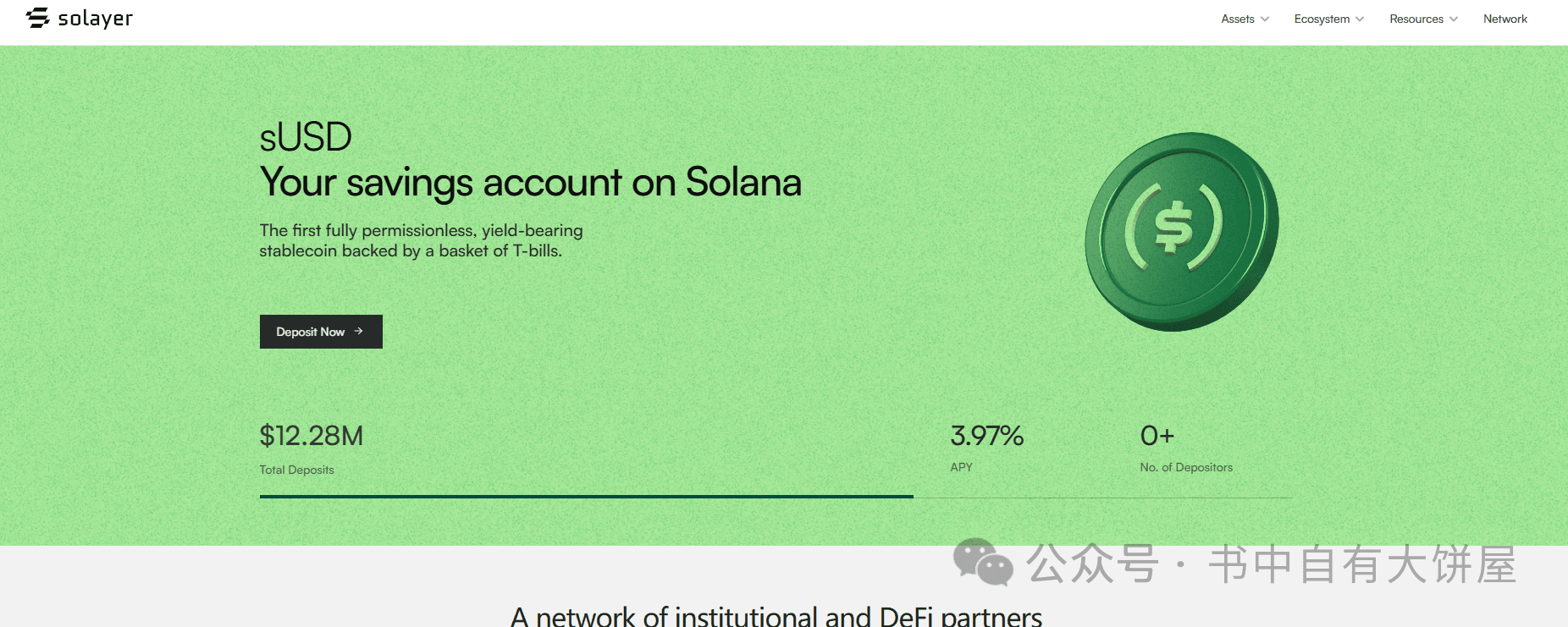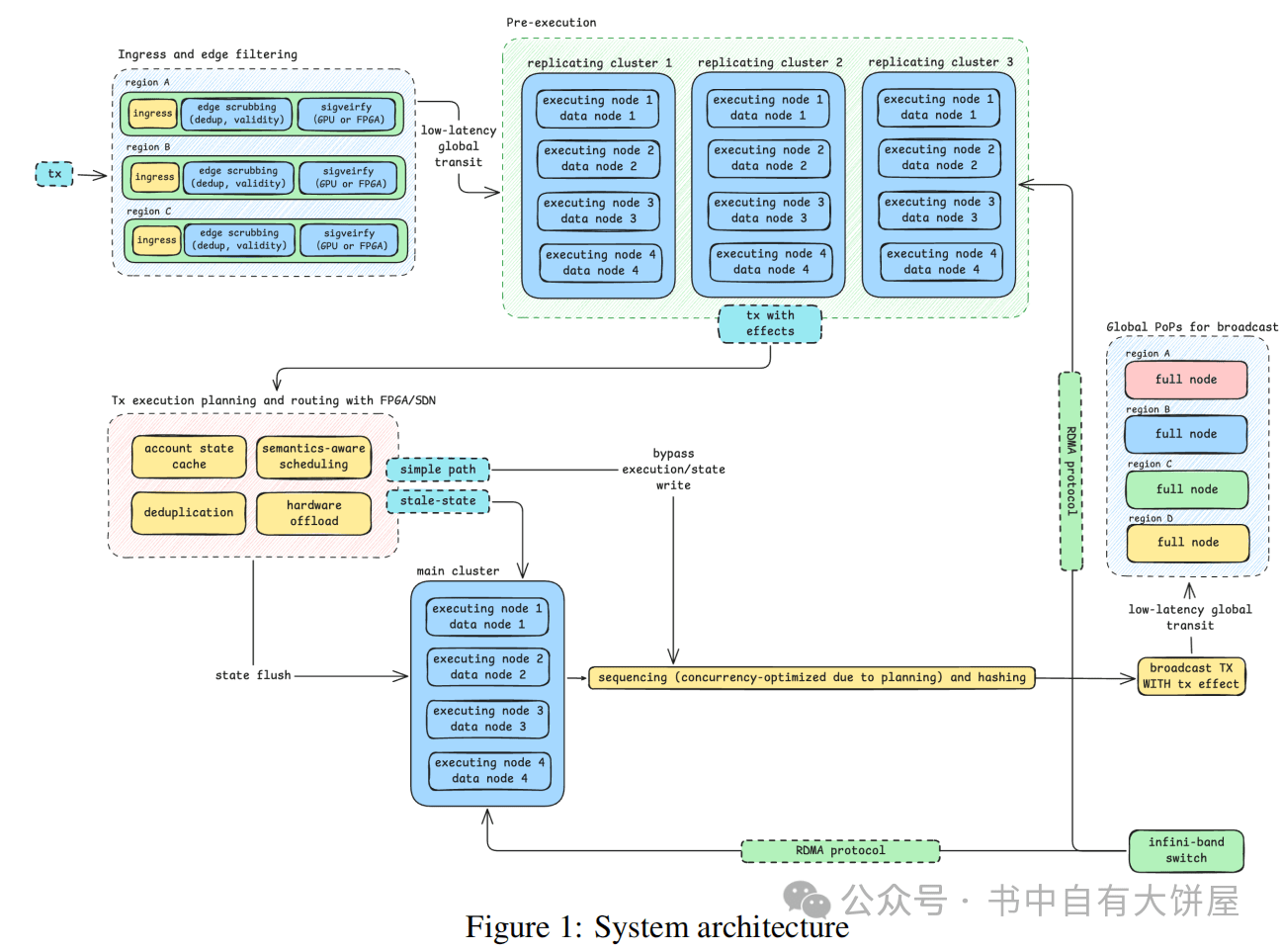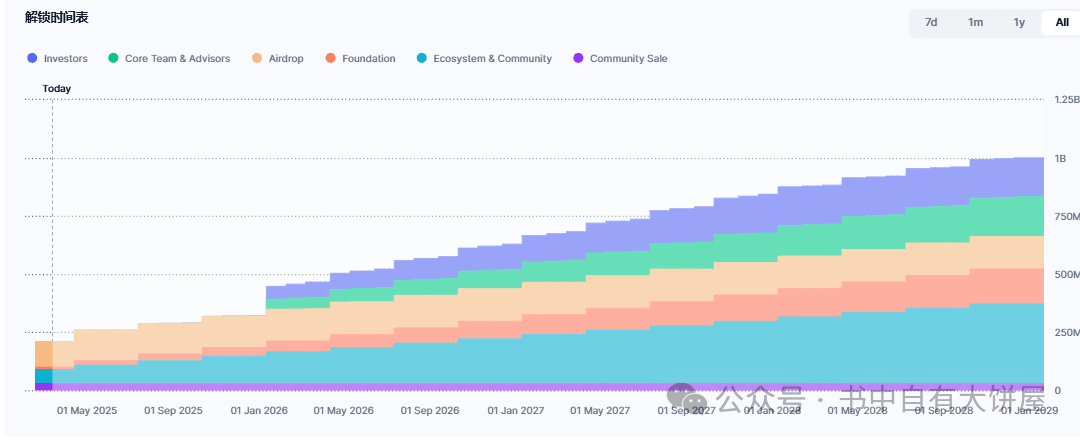@Solayer #BuildonSolayer $LAYER #BuiltonSolayer
Today we continue to look at new projects, as we aim to cover 3,000 projects in 10 years; this is already the 673rd project.
The project has been performing decently lately; the token went live in February 2025. The project is from 2024, but it seems the team has been trying to ride the hype, altering the project narrative. The mainnet is set to launch in August 2024, initially focusing on staking protocols for Solana, reaching a peak of $500 million with 300,000 users. After October, it pivoted to stablecoins, issuing Solayer USD, which currently has a market cap of $30 million, not very high. Then in January 2025, a new roadmap was released, emphasizing hardware acceleration to achieve 1M TPS and 100Gbps.
So what exactly do the founders want to do? You can't be all over the place. If you can really achieve 1 million TPS, then it would indeed greatly enhance the SOL ecosystem. Currently, the project's FDV is $1.1 billion, ranking 160+.

I. Introduction
Solayer is a hardware-accelerated blockchain network designed for high throughput and near-zero latency, with a theoretical TPS speed of 1 million. The project advocates that the next generation of blockchain scaling technology is driven by horizontal scaling and hardware offloading.
Solayer relies on InfiniBand technology, Software-Defined Networking (SDN), Remote Direct Memory Access (RDMA), and a multi-executor model, with the core goal of extending the Solana Virtual Machine (SVM) while providing more powerful capabilities to protect block space and optimize transaction priority.

II. Main Technologies
2.1. RDMA and InfiniBand
Remote Direct Memory Access (RDMA) allows zero-copy data transfers between networked systems, providing direct access to application memory space. Modern RDMA implementations rely on specialized network interface cards (RNICs), which handle not only transport protocols but also perform direct memory operations. This architecture bypasses the traditional operating system's network protocol stack, reducing context switching and CPU overhead in network I/O processing.
The RDMA protocol supports two types of transport modes:
Reliable Connected: Ensures ordered and reliable delivery of data.
Unreliable Datagram: Optimized for low latency, but applications must tolerate possible packet loss.
The RDMA memory model allows remote memory operations to be performed without interrupting the remote CPU, achieving end-to-end latencies for small messages below 1 microsecond in optimized deployment environments. This performance relies on fine memory protection mechanisms, where memory regions must first be registered on the RNIC, which then maintains page tables for direct virtual-to-physical address translation.
InfiniBand is a high-performance implementation of RDMA, designed for high-performance computing (HPC) and data centers. It offloads protocol processing and memory conversion at the hardware level via Host Channel Adapters (HCAs), reducing CPU involvement in data transfer overhead. InfiniBand supports transfer rates from 10 Gb/s (Single Data Rate, SDR) to 100 Gb/s (per port) and can connect via copper or fiber optics.
With high bandwidth (100 Gb/s) and ultra-low latency (end-to-end as low as 600 nanoseconds), InfiniBand excels in scenarios requiring high-speed data exchange, such as artificial intelligence and high-performance computing. Its efficiency and scalability make it widely used in distributed machine learning and other data-intensive applications.
2.2. Software-Defined Networking (SDN)
Software-Defined Networking (SDN) separates the Control Plane from the Data Plane, allowing network behavior to be programmed and managed through a logically centralized controller.
Modern SDN adopts a three-layer architecture:
Data Plane: Composed of programmable forwarding devices, processing packets based on Match-Action rules.
Control Plane: Implements network policies and path calculations.
Management Plane: Provides advanced network orchestration and management.
SDN controllers use distributed consensus protocols to ensure network state consistency among controller replicas and abstract network complexity through Northbound APIs, allowing applications to manage networks more conveniently.
Packet processing adopts a pipeline architecture, with multiple Match-Action stages progressively processing packets, where each stage can modify packet headers or maintain local state. This programmability allows complex network functions such as load balancing, traffic engineering, and network virtualization to be implemented directly in the data plane while maintaining line-rate performance.
III. Overall Architecture and Process
Each transaction first undergoes signature verification and local deduplication at the entry point, then is sent to the pre-execution cluster for speculative execution, and finally transmitted to the sorter via InfiniBand.
The sorter uses SDN switches and FPGAs to determine whether transactions follow a simple path (all accounts are at the latest version) or a complex path (at least one account version update exists). Simple paths directly update the state via RDMA, while complex paths enter a local memory pool and then go through scheduling for parallel execution.

3.1 Microservices Pipeline
The entire transaction processing flow is divided into independent microservices (signature verification, deduplication, scheduling, accounting processing, and storage), automatically scaling resources through an elastic computing architecture and feedback control.
Introducing a simulation phase for speculative execution, capturing transaction effects and intermediate snapshots. Most transactions can be pre-executed in parallel, while conflicting transactions can quickly restore state through the most recent valid snapshot, significantly reducing the computational overhead of traditional accounting processing phases.
3.2 Transaction Semantics-Aware Scheduling
Extended Solana's batch processing model by analyzing the temporal order and read-write sequences of accounts within transactions, constructing optimized locking schedules to allow concurrent execution of transactions that access the same account without conflict.
Utilizing a greedy algorithm and a parallel scheduler integrated with SMF, an approximately optimal scheduling scheme is found within sub-millisecond levels, greatly reducing lock contention while maintaining serialization consistency.
3.3 RDMA-Based Sharded Database
To cope with the growing scale of state data, a sharding mechanism based on key-value storage is adopted, with each node storing a data shard, unaffected by Solana's 10MB limit, supporting arbitrary-sized account data.
Each node contains a memory skip list, contiguous data area, and local LRU cache, enabling sub-microsecond cross-node data access through InfiniBand RDMA, while optimizing data locality through a dynamic rebalancing mechanism to enhance overall transaction throughput.
Financing Situation
Solayer raised $8 million in seed funding at an $80 million valuation in May 2024, with investors including Solana co-founder Anatoly Yakovenko and Polygon co-founder Sandeep Nailwal.
On August 28, 2024, Solayer completed a $12 million seed round financing, led by Polychain Capital, with other investors including Big Brain Holdings, Hack VC, Nomad Capital, Race Capital, ABCDE, and Arthur Hayes' family office Maelstrom.
Team
Rachel Chu: Co-founder of Solayer, previously founded the NFT project Vibe and served as CEO, also a core developer of SushiSwap.
Jason Li: Co-founder of Solayer, holds a Bachelor’s degree in Computer Science from UC Berkeley, and previously founded the non-custodial enterprise wallet project MPCVault.
The specifics are as follows, so this project is likely led by a Chinese or Chinese-speaking team.

Token Economy
$LAYER Total supply: 1,000,000,000 (1 billion) tokens, initial circulating supply: 220,000,000 LAYER (22%). Among them, Community & Ecosystem (51.23%), Core Contributors (17.11%), Investors (16.66%), Foundation (15%).
Token unlocking will occur in a staggered manner, with 3.66% unlocking each month, and a significant unlocking of 12.74% will occur in January 2026, affecting both investor and core team portions. This timing is something to watch closely.

In summary, this project has been continuously changing its narrative because the team fears that the token will not perform well upon launch. They have tried several popular narratives. What I want to say is that you need to think carefully about what you want to do; you cannot just chase after every trend. Technological accumulation takes time, and currently, the new planning for 2025 emphasizes the auxiliary high-speed chain of SVM. The concept of hardware acceleration is indeed good and quite novel, but in reality, it is extremely challenging. So, for a project that is already high-speed like SOL, what does it mean? This needs time to verify. If you truly achieve hardware-level acceleration and elevate the SOL ecosystem to new heights, then your token price will naturally not be low.
So can this project still be played? For a newly launched chain, a $1 billion FDV is indeed a bit high, especially since it's not a bull market. Recently launched SOL L2 projects have only around $300-500 million FDV. Although your concept is new, I personally think it is overvalued. Based on a financing of $20 million at a 16.6% ratio, the valuation would be around $120 million. Even if you multiply that by three for your market cap at launch, $360 million would still be quite high, as most VCs have increased by nearly ten times; that's too high.

